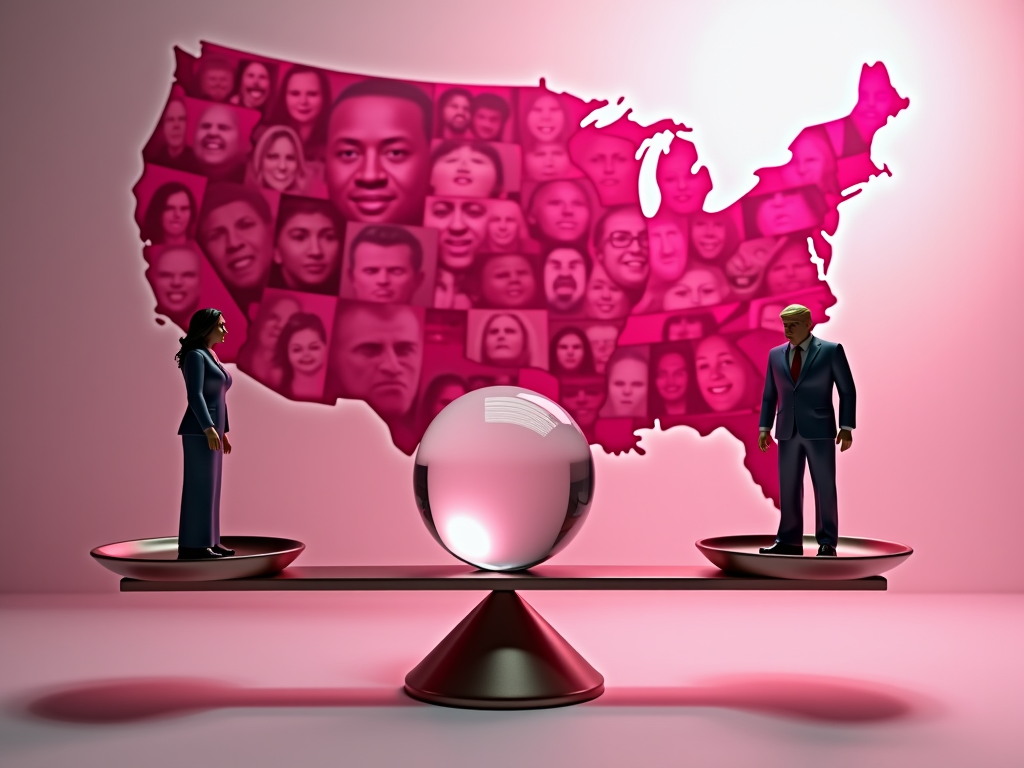Key Points
- Electoral odds remain in flux, with current forecasts showing a tight race between Kamala Harris and Donald Trump, reflecting the evolving political climate and reshaping the horserace.
- Various factors, including polling methodologies, unpredictable voter behavior, and unforeseen events, significantly impact the odds, adding complexity and intrigue to electoral predictions.
The Upcoming US Elections: A Study in Odds
The United States is gearing up for its upcoming 2024 presidential elections, which will define the country’s course for the next four years. As politicians sharpen their campaigns and citizens prepare to vote, political forecasters are busy analyzing the electoral odds that often swing between candidates as the electoral clock ticks.
The Dynamics of Electoral Odds
In the unpredictable realm of politics, candidates’ fortunes can shift rapidly due to public sentiment and other influential factors like campaign strategies, political climate, and unforeseen events. This complexity often hinders precise predictions. Recent updates indicate a tightly contested race between Kamala Harris and Donald Trump. Shifts in betting markets and polling data reflect this competition, with some models suggesting a slight advantage for Trump, while others view it as a toss-up. For instance, PredictIt has recently positioned Harris ahead, marking a significant change influenced by recent campaign events and polling outcomes.
The Role of Polling Methodology
The methodology employed in polling plays a vital role in shaping electoral odds and is integral to the science of electoral forecasting. Over time, the landscape of polling methodologies has transformed, with traditional telephonic surveys giving way to more modern techniques, such as online polling and text message surveys. Despite these technological advances, in-person surveys continue to be utilized, serving specific demographics and contexts effectively.
Each of these methodologies comes with its own set of advantages and challenges. Online polls and text surveys, for instance, are lauded for their efficiency and cost-effectiveness. However, they might not be fully representative due to the digital divide, which can exclude certain populations lacking internet access. On the other hand, telephone polls, once very popular, are now less favored due to their higher cost and the challenge of reaching a representative sample with many households abandoning landlines for mobile phones.
Moreover, the effectiveness of the chosen polling method can considerably impact the accuracy and reliability of electoral forecasts. Pollsters must carefully select their methods based on the target demographic and the specific nuances of the electoral regions. Additionally, the rise of probability panels, which track the opinions of the same group of voters over a period, provides deeper insights into shifting voter sentiments and behaviors.
Polling organizations also implement various statistical techniques like weighting to align their sample more closely with the broader population in terms of age, race, gender, and education. These adjustments are crucial to counteracting biases inherent in non-probability sampling methods, such as opt-in online surveys.
It’s essential for polling organizations to meticulously choose their polling methodologies, as these choices significantly influence the reliability of the predictions made about election outcomes. As such, the evolution and selection of polling methods are integral not merely as tools of measurement but as crucial determinants in the dynamic realm of electoral odds and forecasting.
The Unpredictability of Voter Behavior
Another factor that significantly impacts the electoral odds is voter behavior. The complex kaleidoscope that is the American electorate makes it a daunting task to predict voting patterns. Changes in voter behavior, driven by evolving opinions and sentiments, present a perennial challenge to analysts in estimating the odds accurately. This unpredictable aspect adds to the intrigue of elections, making the ‘game of odds’ even more tantalizing.
The Twist of Unforeseen Events
Lastly, the role of unforeseen events in shaping the electoral odds cannot be understated. Incidents like economic turmoil, social unrest, natural disasters, or even a pandemic can dramatically shift the odds in or against a candidate’s favor. These are often the ‘wild cards’ in the electoral process, capable of turning the tide in the most unexpected ways.
Current Forecast Models and Prediction Markets
As of the latest updates, FiveThirtyEight’s forecast model indicates that the race is a toss-up between Kamala Harris and Donald Trump, with Harris currently leading in some polls but Trump gaining ground in others. Prediction markets like Polymarket have been influential in shaping public perception of the odds. However, there have been concerns about wash trading and discrepancies in reported volumes, which raise questions about the accuracy of these platforms.
Conclusion
As we move closer to the 2024 election, the electoral odds continue to captivate the interest of people, providing a snapshot of the political sentiment and a prediction of the electoral outcome. However, it is essential to remember that the odds are not the end-all of the electoral process. They are a part of the larger, dynamic political landscape that illuminates the path to Election Day, underscoring the essence of democracy in action.















